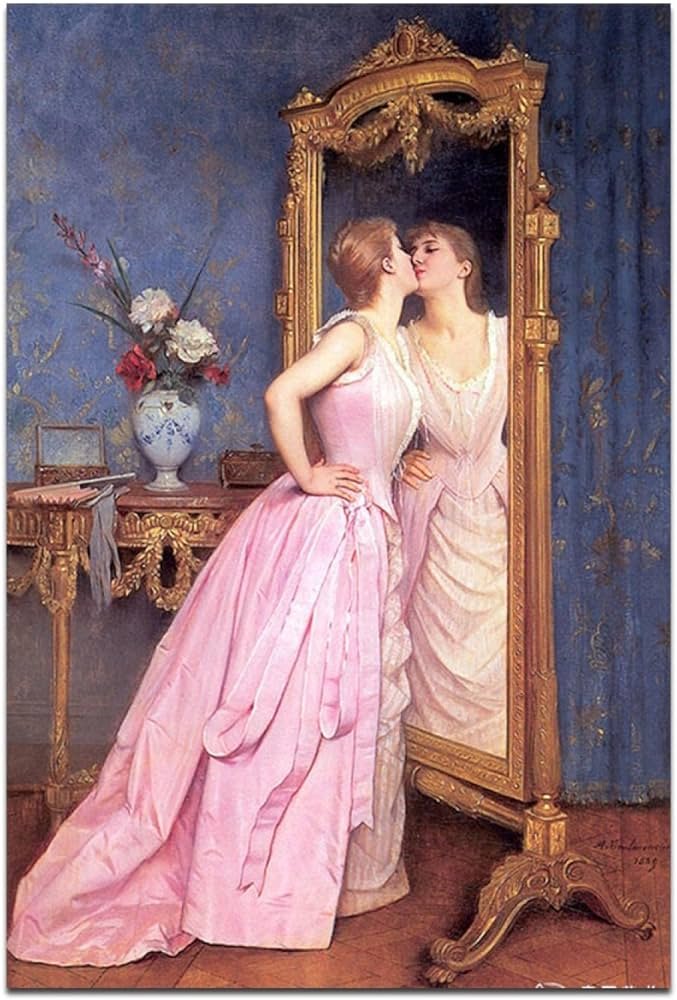The Toulmouche Girls
The aesthetic of girlhood has taken Instagram and TikTok by storm. I have always found that girlhood is captured best by women, my favourite examples being director Sophia Coppola and photographer Justine Kurland. That was until I stumbled upon Auguste Toulmouche, a 19th-century French painter. The subjects of his paintings are young, upper-class, Parisian women. A piece of his, titled “The Hesitant Fiancée” has gained popularity on TikTok, being used to illustrate circumstances of female rage.
Figure 1. Auguste Toulmouche, The Hesitant Fiancée, 1866.
When I looked into the eyes of the focal girl, my first thought was “I would have picked a different name for this piece”. She is so much more than hesitant - she’s enraged. I instantly knew this marriage was not her decision. Her face is full of disdain and anger towards whoever is trying to marry her off, and I was immediately taken by how much raw emotion was found in a pair of oil-painted eyes. After seeing that painting, I began looking at his other work and was unexpectedly impacted. It surprised me how much his work spoke to me as I’ve never been an art connoisseur. But the women and moments he chose to capture in his paintings were so unflinchingly real. When I look at older paintings of women, there is almost always a disconnect - I don’t often see people, but subjects– posed, stoic, and impersonal. But when I look at the girls in Toulmouche’s art, I see myself and other women I know.
The girls are the upper-class bourgeoisie. At face value, we have nothing in common. They wear ball gowns to lounge around in their luxurious estates, while I eat day-old Kraft Dinner on the living room pull-out in my torn pajama pants. Yet in Toulmouche’s paintings, he makes luxury and abundance a mere accessory to his main subject, which is girlhood. His art displays a youthful nature; the girls express willfulness, vanity, intelligence, and curiosity. They are kissing mirrors, feeding birds, comforting friends, falling asleep on each other. My two favourite paintings of his quickly became Vanity (1890), and An Afternoon Idyll (1874). They showcased aspects of girlhood that I especially related to. In those paintings, I remembered those days I woke up, looked in the mirror, and thought “I love myself”. Or when I would invite a friend over to watch a movie, and we’d end up napping instead. I like that through their frilly dresses and gold-accented furniture, I can spot something familiar.
Figure 2. Auguste Toulmouche, Vanity, 1890.
Figure 3. Auguste Toulmouche, An Afternoon Idyll, 1874.
There’s something so different about the male gaze versus the female gaze. The female gaze can see a naked woman, and think freedom rather than sex. There is no objectification - women can appreciate beauty without wanting to possess it. This is why I find it so impressive when a male artist is able to capture girlhood in a way that truly appeals to women. And for a male artist to do that in a time when women were discredited, their skills underestimated, and capabilities unappreciated is even more striking. To showcase candid emotion in women other than joy or serenity is something that I’ve found to be rarely captured. Many of Toulmouche’s paintings are calmer and more pedestrian, featuring women reading or simply standing. But without fail, his paintings always seem to show a genuineness, which I find to be very special.
I’d go as far as to say if Toulmouche’s work was exposed to this generation’s women, the Mona Lisa might not be the only go-to girl at the Louvre. The beauty of girlhood, I think, is that it demands to be noticed. There is a power in the lawless, chaotic charm that exudes from feminine youth, and I commend Toulmouche for being able to capture it.
Illustration by Sydney Hanson




